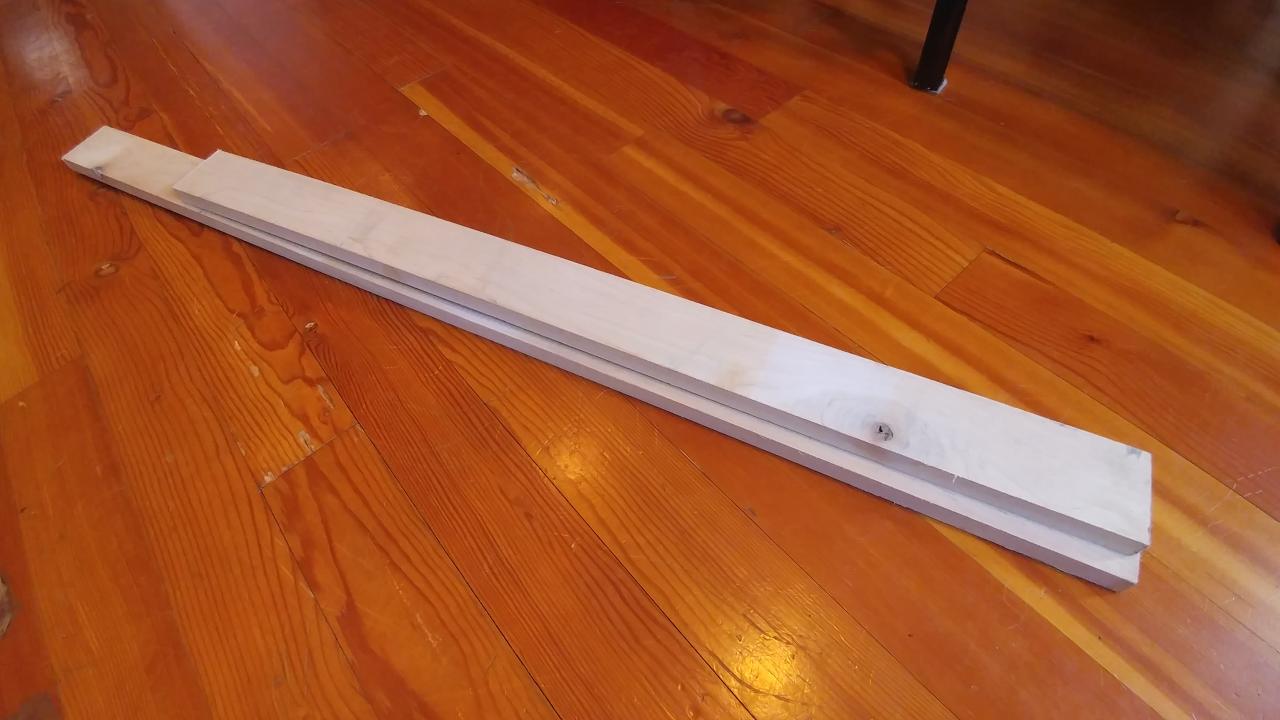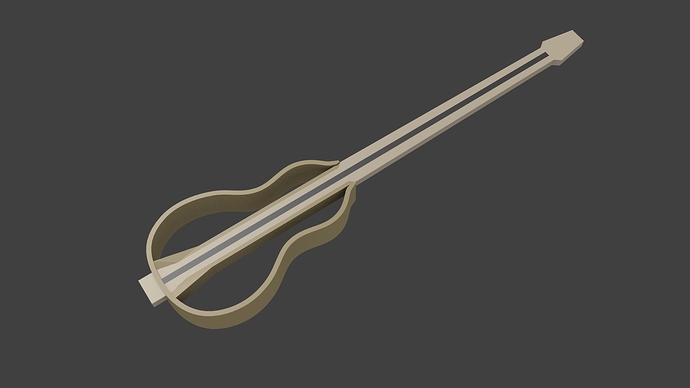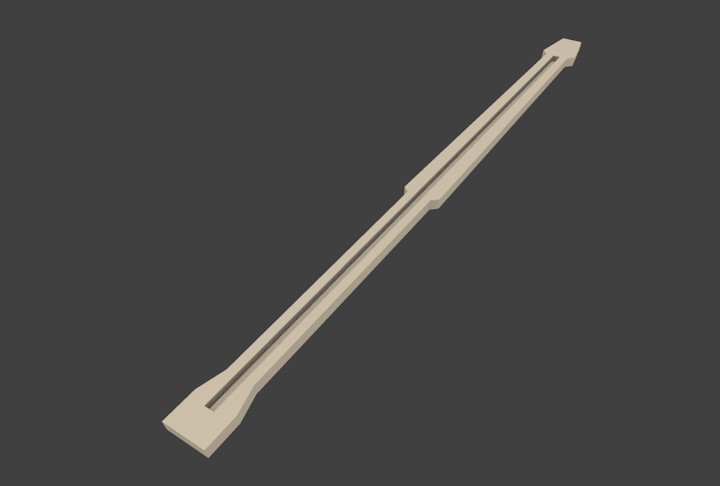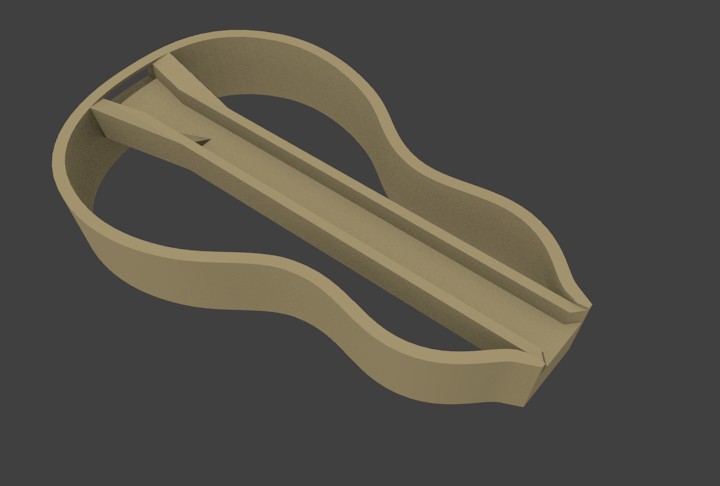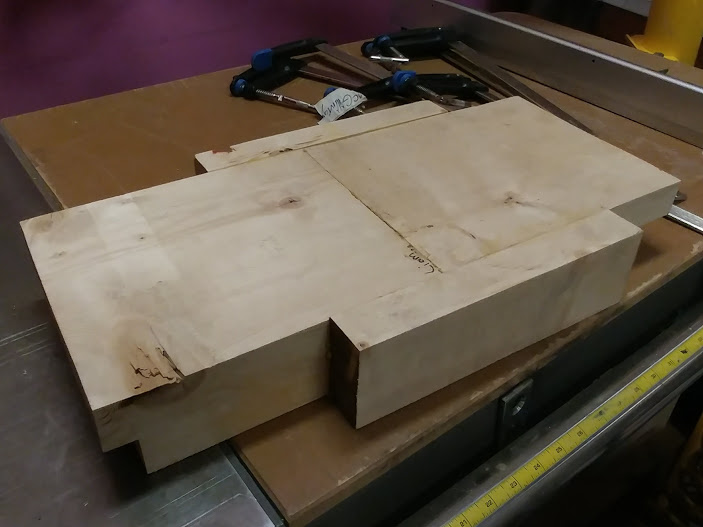After 4 months of living in Whistler, I am back in Vancouver with my family. Unfortunately, I can’t continue my existing projects until the new year; as while I was in working in Whistler, my family brought all my supplies to a storage facility so that our house can get renovated. We’re living in a different house temporarily. I probably can’t continue my existing projects (air cleaner, resistance soldering unit) until I move back in. This will be my first Hackspace project on my return.
For the actual project, start reading here:
I want to build a semi-acoustic stringed instrument, which does not fit into any existing category. It will be tall, fretless, and played upright (like a cello or upright bass). The construction and body will be more guitar-like, but rougher. It will use the upper harmonics of low-tuned, loose strings to make a harsh-sound of many frequencies. I will also rely on electronic effects to heavily distort the sound. I am making this specifically for noise music.
Recently, I have aquired a taste for Harsh Noise music, mostly from Merzbow. This makes me want to try making noise music myself, and it would be a good opportunity to make my first instrument (since it probably won’t take the precision needed to make a “good” instrument for other genres).
I want it to have a 38" scale length (the length of the vibrating part of the string). For comparison, bass guitars range from 30" to 35" (34" being most common), and orchestral upright basses ranges from 105-110 cm (41.3"-43.3"). I think I’ll have any truss rod (unless if someone can sell me a long carbon fibre rod), but this shouldn’t be too bad as it’s fretless and tuned loosly. The soundboard at the bottom will be rather small for an instrument so big and low-tuned. There will be 3 playable strings and one sympathetic string. There will be two electromagnetic pickups and at-least one piezo pickup, with separate audio outputs for more complex effects. I was also thinking of adding some unusual features, like a metal container filled with water, and a sand-filled chamber for noise.
Here is how I will construct it:
I have these two pieces of maple to make the neck and fingerboard. The longer one is 33". I should of gotten it cut at 47", but it was a stupid last-minute mistake that I’ll have to work around. I’ll have the shorter one glued on-top for the fingerboard. It’s fretless and loose strung, so no truss rod.
I want to know if it’s possible to make a cut like this in the plank, and then put that bottom surface through a router. What tool do I use to give it that wedge shape? Does the router accept a shape like this, or does it need something that can sit flat on the table?
If not, then I suppose I would have to either carve the back of the neck manually (is this how it’s often done), or have the head glued on as a separate piece. But most instruments seem to have the head and neck as one piece, and I don’t know if I can make a strong enough connection to resist the tension.
http://www.washburn.com/products/acoustics/images/RO10B.jpg
I want to use this Washburn travel guitar as a reference for the soundboard. Of the guitars I tried at Rufus guitar shop, I decided that this soundboard sounds the closest to the harsh kind of sound I want. The soundboard is small even for this instrument, but I’m not making mine too much bigger. I want to emphasise the upper harmonics, and it’s primarily an electric instrument.
Although the top panel will be a similar shape, I’m probably going to have the sides and center carved from a block of wood (rather than steam-bending panels for the sides). However, I don’t know if I must use the mill for this (either CNC or manual), or if there’s another way to make an electric guitar-like body. I’m not trained for any of the mills.
